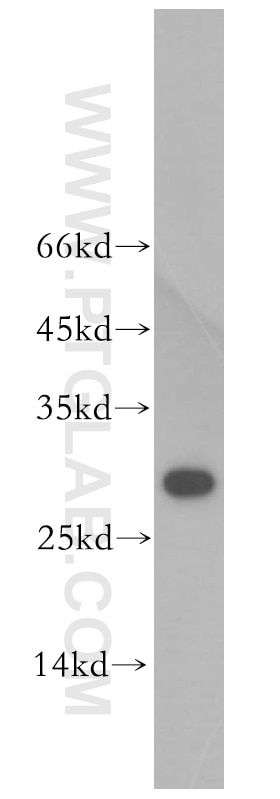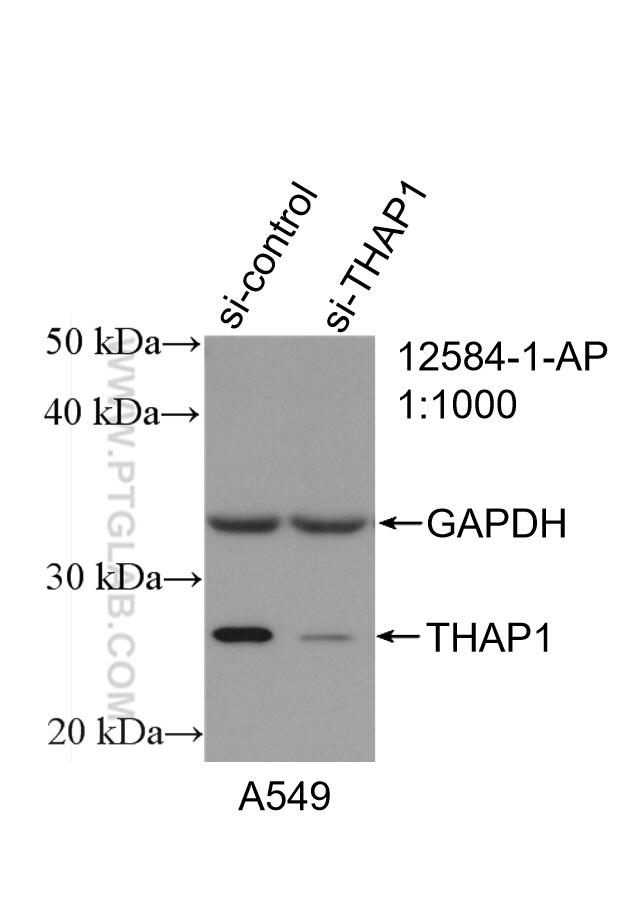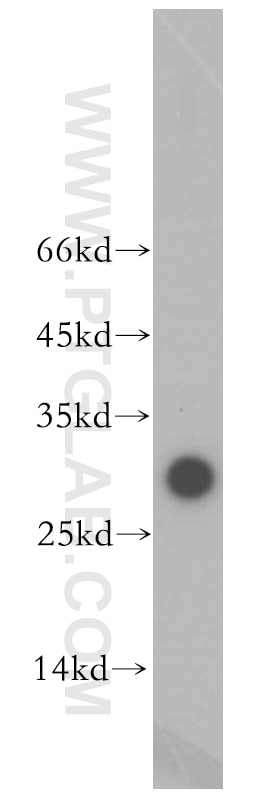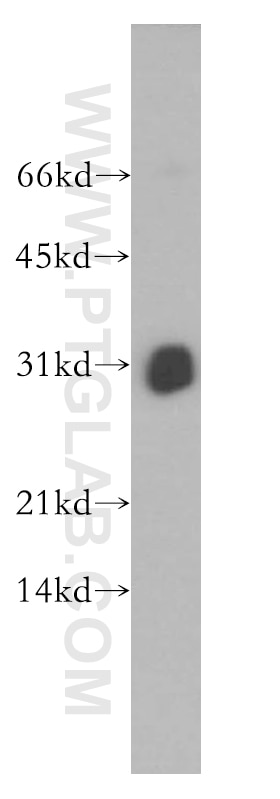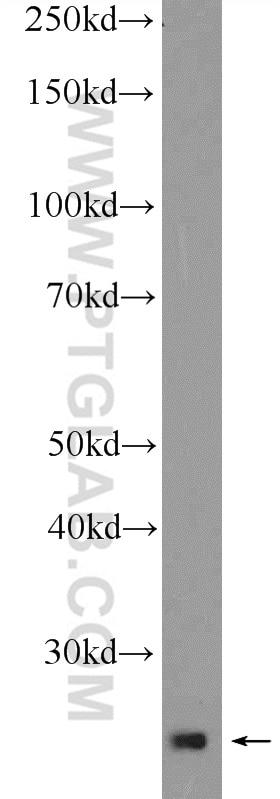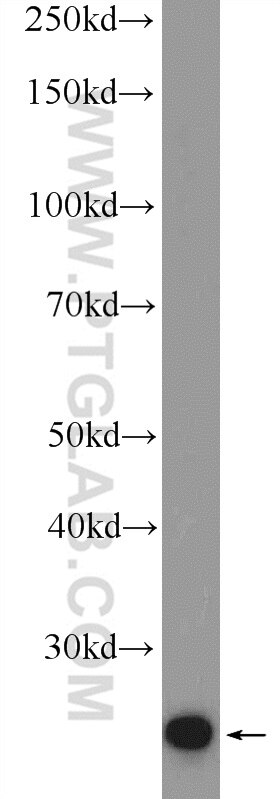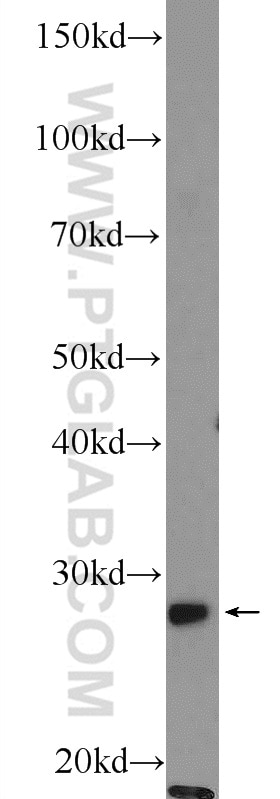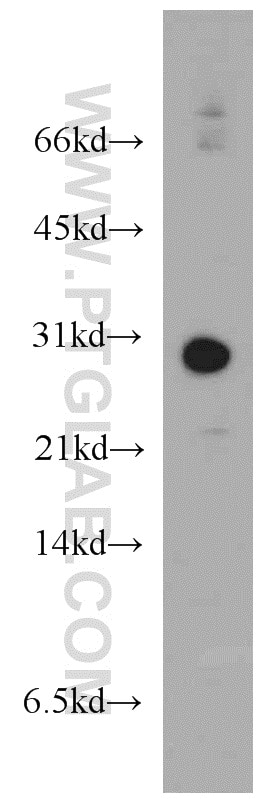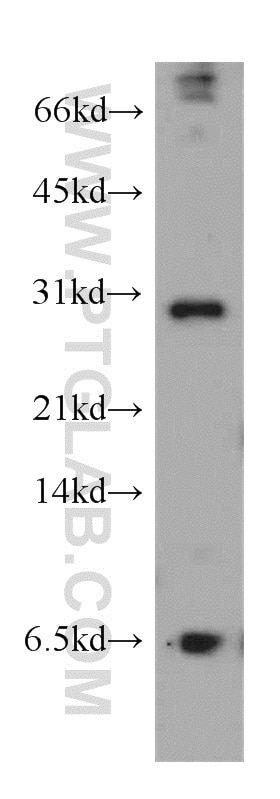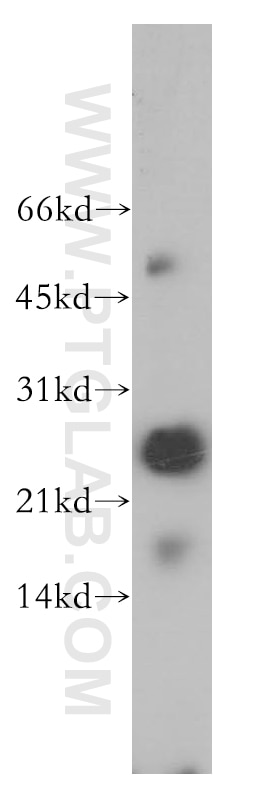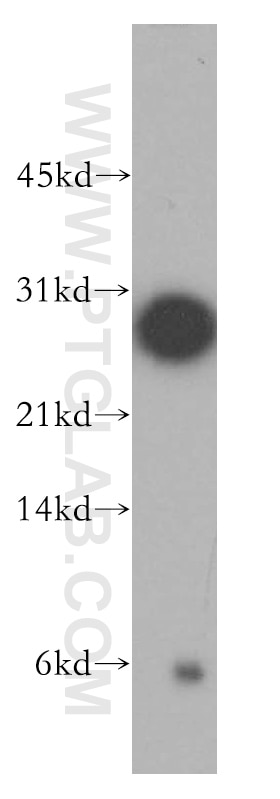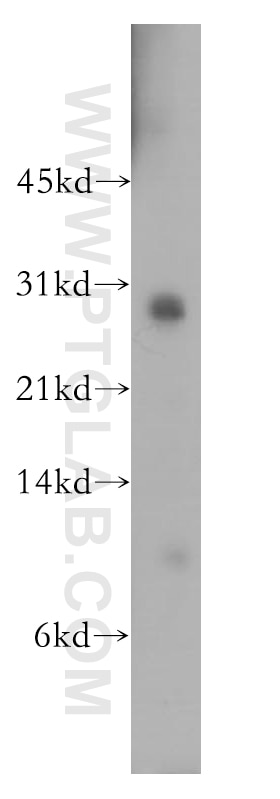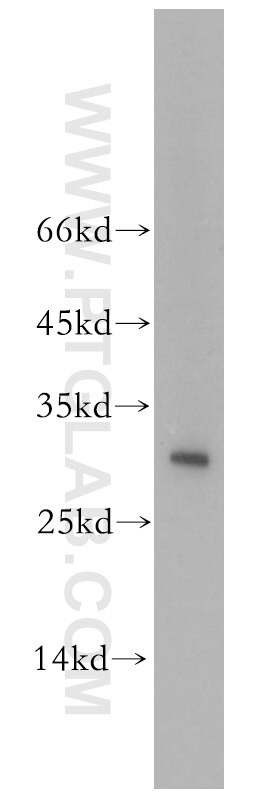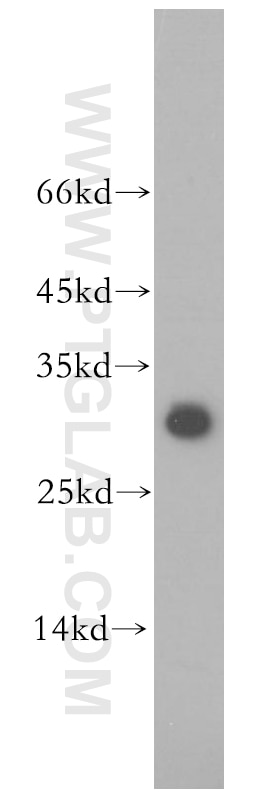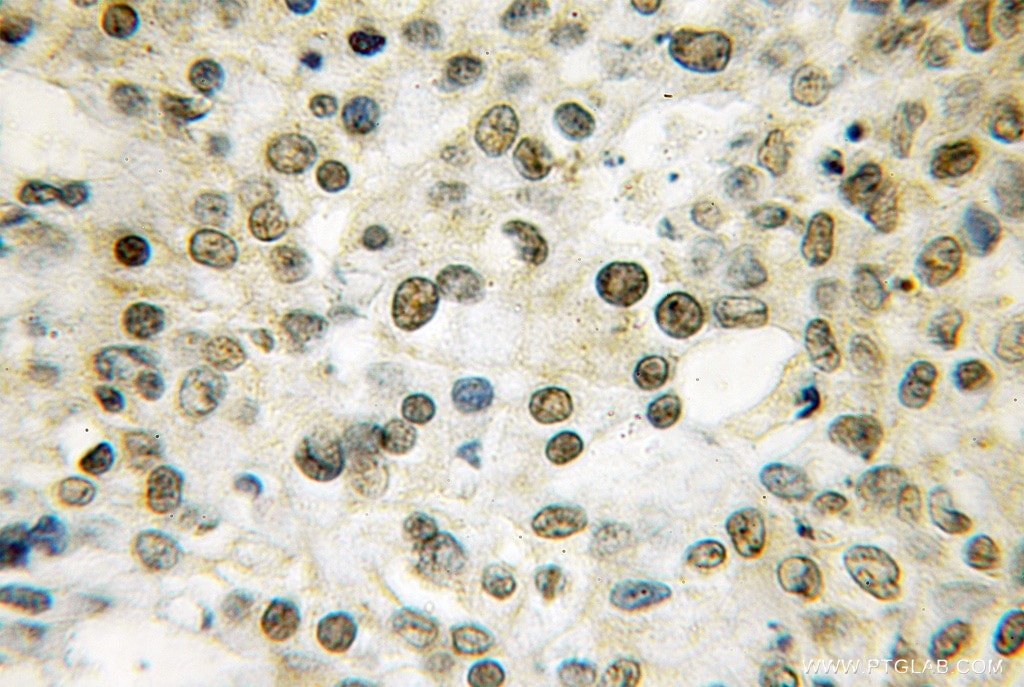- Phare
- Validé par KD/KO
Anticorps Polyclonal de lapin anti-THAP1
THAP1 Polyclonal Antibody for WB, IHC, ELISA
Hôte / Isotype
Lapin / IgG
Réactivité testée
Humain, rat, souris
Applications
WB, IHC, ChIP, ELISA
Conjugaison
Non conjugué
N° de cat : 12584-1-AP
Synonymes
Galerie de données de validation
Applications testées
| Résultats positifs en WB | cellules HepG2, cellules A375, cellules HEK-293, cellules HeLa, cellules SGC-7901, tissu cardiaque de souris, tissu cardiaque humain, tissu cérébral de souris, tissu cérébral humain |
| Résultats positifs en IHC | tissu de cancer du côlon humain il est suggéré de démasquer l'antigène avec un tampon de TE buffer pH 9.0; (*) À défaut, 'le démasquage de l'antigène peut être 'effectué avec un tampon citrate pH 6,0. |
Dilution recommandée
| Application | Dilution |
|---|---|
| Western Blot (WB) | WB : 1:500-1:1000 |
| Immunohistochimie (IHC) | IHC : 1:20-1:200 |
| It is recommended that this reagent should be titrated in each testing system to obtain optimal results. | |
| Sample-dependent, check data in validation data gallery | |
Applications publiées
| KD/KO | See 5 publications below |
| WB | See 13 publications below |
| IHC | See 1 publications below |
| ChIP | See 1 publications below |
Informations sur le produit
12584-1-AP cible THAP1 dans les applications de WB, IHC, ChIP, ELISA et montre une réactivité avec des échantillons Humain, rat, souris
| Réactivité | Humain, rat, souris |
| Réactivité citée | rat, Humain, souris |
| Hôte / Isotype | Lapin / IgG |
| Clonalité | Polyclonal |
| Type | Anticorps |
| Immunogène | THAP1 Protéine recombinante Ag3285 |
| Nom complet | THAP domain containing, apoptosis associated protein 1 |
| Masse moléculaire calculée | 213 aa, 25 kDa |
| Poids moléculaire observé | 25-30 kDa |
| Numéro d’acquisition GenBank | BC021721 |
| Symbole du gène | THAP1 |
| Identification du gène (NCBI) | 55145 |
| Conjugaison | Non conjugué |
| Forme | Liquide |
| Méthode de purification | Purification par affinité contre l'antigène |
| Tampon de stockage | PBS with 0.02% sodium azide and 50% glycerol |
| Conditions de stockage | Stocker à -20°C. Stable pendant un an après l'expédition. L'aliquotage n'est pas nécessaire pour le stockage à -20oC Les 20ul contiennent 0,1% de BSA. |
Informations générales
THAP1 belongs to the THAP1 family. It is a DNA-binding transcription regulator that regulates endothelial cell proliferation and G1/S cell-cycle progression. THAP1 may also have pro-apoptopic activity by potentiating both serum-withdrawal and TNF-induced apoptosis. Mutations in THAP1 have been associated with dystonia 6. THAP1 encodes a transcription factor with mostly unknown targets. It regulates the expression of DYT1 (TOR1A), another dystonia-causing gene. After characterization of the TOR1A promoter, THAP1 binds to the core promoter of TOR1A. Wild type THAP1 represses the expression of TOR1A, whereas dystonia 6-associated mutant THAP1 results in decreased repression of TOR1A. Catalog#12584-1-AP is a rabbit polyclonal antibody raised against full-length of huamn THAP1.
Protocole
| Product Specific Protocols | |
|---|---|
| WB protocol for THAP1 antibody 12584-1-AP | Download protocol |
| IHC protocol for THAP1 antibody 12584-1-AP | Download protocol |
| Standard Protocols | |
|---|---|
| Click here to view our Standard Protocols |
Publications
| Species | Application | Title |
|---|---|---|
Nat Genet Mutations in the histone methyltransferase gene KMT2B cause complex early-onset dystonia. | ||
Mol Cell The dystonia gene THAP1 controls DNA double-strand break repair choice.
| ||
Brain DYT6 mutated THAP1 is a cell type dependent regulator of the SP1 family.
| ||
Dev Cell The DYT6 Dystonia Protein THAP1 Regulates Myelination within the Oligodendrocyte Lineage. |
